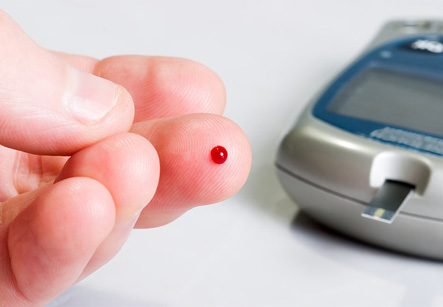Diabetes Mellitus
Introduction
Diabetes mellitus is a disorder of metabolism. It is a chronic disorder. There is increased level of glucose or sugar in blood. This is due to inability of the human body to produce insulin or use insulin. In pancreas specialized beta cells are located. These cells produce and release insulin that regulates glucose levels in blood. Insulin helps in reducing blood sugar and using it for various functions of the body in normal individuals. Signs and symptoms of diabetes include increased volume of urine, increased appetite and increased appetite with or without weight loss.
Iranian scientists have moved to the forefront in embryonic stem cell research, according to a recent joint study by Harvard University and the Massachusetts Institute of Technology

Treatment
Awareness and patient education regarding diabetes mellitus is the key to treatment. Diabetes may lead to various complications like problems related to heart, kidneys, eyes, feet etc. Diabetes is associated with blood vessel damage. This in turn leads to heart disease, damages the kidneys, causes diabetic retinopathy – a form of blindness associated with diabetes and gangrene of the feet. Currently a lot of conventional treatments are available for diabetes. Therapy includes different insulin injection preparations and oral anti-diabetic drugs. These treatments control blood glucose level effectively. They also delay the onset and progression of complications related to diabetes mellitus. But root cause of diabetes is not cured by these conventional treatments. The underlying cause of the disease lies in the defects of beta cells of pancreas.
The objectives of stem cell therapy in diabetes mellitus are to protect remaining beta cells and replace beta cells.
Stem cell therapy is a newly emerging treatment modality. It has been found to be effective in various chronic disorders. It has been evaluated in diabetes mellitus and initial results are encouraging. The objectives of stem cell therapy in diabetes mellitus are to protect remaining beta cells and replace beta cells. It also decreases requirement of medications and prevents complications. The stem cells have the potential to turn into any cell of the body. These are basically immature cells that are injected into the body and are coaxed to turn into insulin producing pancreatic beta cells.
Reports suggest stem cell therapy in patients with diabetes leads to significant improvement. If the disease is in its early stage, full recovery may be possible. There is normalization of immune system and indicators of blood glucose level. Disease progression is also hindered and remission for a longer period is achieved. Quality of life and life expectancy are also increased.
Patients should be chosen very carefully for stem cell therapy. It has been found to be most effective in:
• Newly diagnosed patients with diabetes
• Patients with renal complications
• Increased incidence of infections and defect of immune system
• Those not responding to oral anti-diabetic drugs
Role of stem cell therapy in diabetes is still in its infancy. Detailed studies are warranted to establish the definite role of stem cell therapy in diabetes.